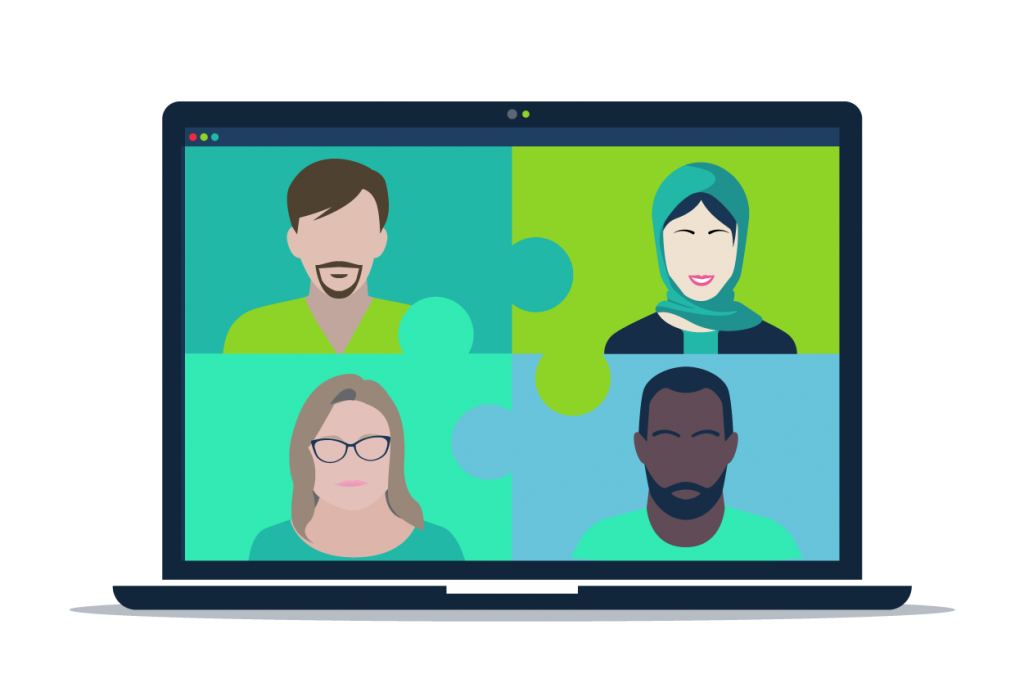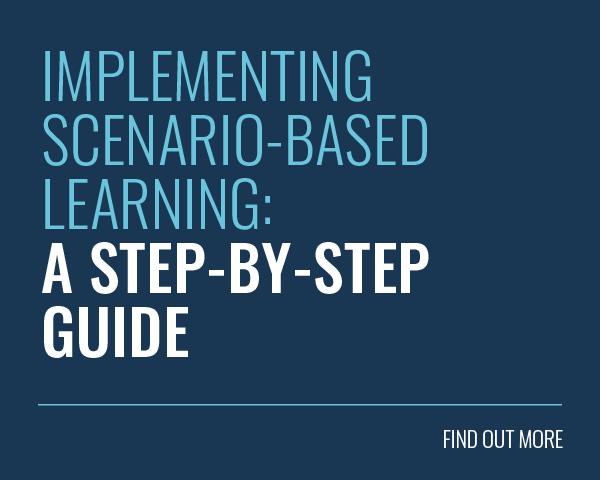
That’s right. The world of learning technology has served up yet another acronym for you to enjoy. This time we’re going to be focusing on MOOCs. As funny sounding as they may be, a MOOC is a pretty serious thing. It stands for ‘massive open online course’.
But what does that really mean?
Well, the term MOOC first popped up back in 2008. The intention was to take advantage of online learning’s ability to connect people worldwide. After all, traditional learning approaches can be quite restrictive.
MOOCs, on the other hand, provide an open and accessible form of online learning. In this article, we’ll delve into the inner workings of a MOOC. You’ll learn what they really are, what different varieties there are, the associated benefits and more. Let’s get started!
The History of MOOCs
The term ‘MOOC’ was first uttered well over a decade ago. It was coined in 2008 by Dave Cormier, in relation to a course called Connectivism and Connective Knowledge. The course was designed and taught by Stephen Downes and George Siemens. Much like online learning nowadays, the aim was to forego the boundaries of classroom learning and allow students worldwide to participate.
They certainly achieved this feat! 25 students attended the course on the campus of the University of Manitoba, and a further 2,300 from around the world participated online.
Since then MOOCs have come a long way. There are now a number of dedicated platforms for them, such as Edx and Coursera.
As you’re likely aware, the COVID-19 pandemic ushered in a new age of digital transformation. Learning was a major part of this sea change.
Additionally, thanks to lockdown mandates and wide-scale furloughing, many people found themselves with more spare time than ever before. As a result, they decided to expand their knowledge and enrol in some free courses.
Consequently, platforms that offer MOOCs experienced a massive influx of students. In fact, enrollment at Coursera skyrocketed by 640% between mid-March to mid-April of 2020.
There are now well over 16,000 MOOCs available to enrol on. But what would you be getting yourself into? Keep reading to find out!
What is a MOOC?

There are a number of different definitions of MOOCs out there. They all have different conditions and requirements. However, we like this one by Gartner:
‘The massive open online course (MOOC) is an online phenomenon made possible by: (1) social networking facilitation of acknowledged expert(s) in a field of study; (2) freely accessible online resources; and (3) hundreds to thousands of registered students. MOOCs have free (no fee) open enrollment to anyone anywhere with network access.’
The key takeaway is that they’re free. Higher education comes at a price and it’s often a pretty high one. As such, professors like Downes wanted to expand the group of people who had access to such knowledge.
This is why he jumped at the opportunity to teach a course online to hundreds of students. After all, the course focused on the importance of connecting students to generate better learning outcomes.
In summary, the idea behind a MOOC is:
- It should be able to reach a large number of people (Massive).
- It should be accessible to anyone and free of charge (Open).
- A MOOC should also be delivered via the internet (Online).
- Lastly, it should allow learners to discover a new topic (Course).
‘MOOCing’ is a form of online learning. In fact, it’s probably best defined as a form of distance learning.
‘Similar to ‘remote learning’, distance learning implies a geographical distance between the instructor and the student. Technology is great for bridging this gap. This is a convenient approach for many students. As a result, a lot of universities are offering degrees in distance learning courses.’
As you can see, the whole point of a MOOC is to connect the student and professor from different locations. That brings us neatly onto our next section.
Connectivism Theory

This learning theory is a fairly recent one. Downes himself defines it as:
“…the thesis that knowledge is distributed across a network of connections, and therefore that learning consists of the ability to construct and traverse those networks.”
The starting point of connectivism is the individual learner. They host their own network of knowledge within their brains.
In the workplace, the individual connects to their organisation’s system and supplies their knowledge. This adds to the company’s intellectual capital. The learner can now stay up to date on any topic they’ve made the connection to. Additionally, they can make new connections and learn new information.
With a learning management system like Growth Engineering LMS, connectivism is able to thrive. With interactive features such as social feeds, webinars and Live Chat, it encourages and facilitates the knowledge sharing that keeps connectivism thriving.
As MOOCs have developed alongside learning theories, different categories have emerged. Similar to formal learning and informal learning, some are more structured whereas others are a bit more free-flowing.
The Different Kinds of MOOCs
It’s been a few years since Downes and Siemens taught that course back in 2008. During this time, MOOCs have grown in popularity and evolved a lot in the process.
Below we’ll explore the three main types you’re likely to stumble across.
What is a cMOOC?
The first is what you would call a ‘connectivist MOOC’ or cMOOC. These approach learning in the same way as the 2008 course. Participants are able to pool their collective knowledge together and learn from one another.
Downes identified the four key principles of a cMOOC:
- Autonomy: learners should be able to select what content they wish to learn as there’s no formal syllabus.
- Diversity: there should be participants from a range of backgrounds, with varying knowledge levels so everyone can learn from everyone. There should also be a diverse range of tools employed.
- Interactivity: cooperative learning should take place as well as constant communication between MOOC participants.
- Openness: this encompasses access to content, activities and assessments.
As Siemens himself put it, a cMOOC is ‘based on the idea that learning happens within a network, where learners use digital platforms such as blogs, wikis, social media platforms to make connections with content, learning communities and other learners to create and construct knowledge.’
cMOOCs have very strong social learning elements and allow learners to share useful resources and discuss them. Ultimately, all of the participants take on a blurred role somewhere between teacher and learner, which is rather different to a traditional course.
These courses are centred around a learning community rather than an instructor. Because of this, those that actively engage with others are more likely to experience better results.
A study found that low-level active interactions of cMOOC learners have no significant impact on content production. Contrastingly, high-level active interactions will have a significant positive impact on content production.
All this social interaction and informal learning can leave learners without a clear sense of structure. After all, there is no direct information source. An xMOOC, on the other hand, doesn’t have that problem.
What is a xMOOC?
For an alternative approach to a cMOOC, Downes proposed the term xMOOC. The ‘x’ here means it’s an ‘extended MOOC’.
Unlike a cMOOC, they’re centred around the instructor and not a group of students. To describe the difference, Siemens states ‘cMOOCs focus on knowledge creation and generation, whereas xMOOCs focus on knowledge duplication.’
xMOOCs are much more like traditional courses in that the training is delivered by an instructor in a structured format. They’re a combination of pre-recorded video lectures with quizzes, tests, or other assessments.
One of the benefits of an xMOOC is that you may find it more structured and easier to follow. After all, knowledge is being delivered by the instructor rather than various different people.
However, since this training is still delivered to a large number of people, there is little opportunity for interaction between instructors and students.
Furthermore, these courses often strip away many of the social elements found in a cMOOC, so learners often end up simply working through pre-made content.
What is a hMOOC?
The last and most recent type of MOOC is called a hMOOC. The ‘h’ here means ‘hybrid’. It’s a combination of a cMOOC and xMOOC meaning you get the best of both worlds.
It provides a welcome balance between the structured nature of knowledge transfer from experts to novices and the freedom of a collective online community.
An example of a hMOOC would be students learning from an instructor online, then coming to class (virtually or face-to-face) to discuss what they’ve learned with their peers.
A hMOOC is a good alternative to an all or nothing approach. Learners can reap the benefits of social learning and refer to an instructor when necessary.
However, this can make it harder to track knowledge retention and determine what works best, as knowledge is being generated by a few different sources.
Benefits of a MOOC
Increased Accessibility
As previously mentioned, a MOOC is free of charge. This means that anyone and everyone is able to expand their knowledge — providing they have an active internet connection and the relevant device. Nowadays, there are even MOOC master degrees.
Increased education does good for everyone. To name a few benefits, it:
- Discourages crime
- Leads to a reduction in poverty
- Encourages economic growth
- Increases the likelihood of being productive citizens
- Promotes gender equality
As online learning experts, we encourage all to build their knowledge when they can. MOOCs can help you to achieve this. If we can close the connectivity gap, then they could play a powerful role in helping to facilitate a more equitable world.
Increased Social Learning

We love social learning! It’s got a whole load of benefits and you’re bound to experience them with MOOCs. Naturally, it’s going to be more likely with a cMOOC over an xMOOC. However, the principle of social learning is present with both kinds.
One benefit you’re most likely to see with a MOOC is the cultivation of a knowledge sharing culture. After all, everyone is working together towards the same goal. As a result, they can bounce ideas off each other and help advance their knowledge. This has been shown to increase productivity by 40%!
Social learning features on an LMS create the same effect. Learners can share ideas on social feeds, in Clubs or via Live Chat. This also helps to increase communication and improve connections. This can save companies an average of $62.4 million a year.
Quicker & More Efficient Learning
The time taken to complete a MOOC is often considerably shorter than a traditional qualification. While a university course typically lasts at least three years, a MOOC ranges in length from 1 to 16 weeks.
This is perfect for appealing to the modern learner. After all, the average learner’s attention span has fallen to eight seconds. They are also only able to dedicate 1% of their week to learning and development. A MOOC solves both these issues by providing quality knowledge transfer in a shorter time frame.
Disadvantages of a MOOC
Despite the popularity of MOOCs, they suffer from a number of challenges. Here are a few, along with ways to combat them.
One-size-fits-all
The massive and open nature of MOOCs means that it’s difficult to personalise the experience for the learner. This is particularly true with xMOOCs, where each learner will generally be given the exact same set of content to work through.
This one-size-fits-all approach can be lessened somewhat by offering multiple types of content and allowing the learner to choose something to suit them. For instance, you could offer videos, audio, games, interactive eLearning units, or downloads.
You could also use adaptive learning to allow the system to push extra content to the learner based on their performance.
Maintaining Engagement
When running a MOOC, you rely on each learner’s ability to self-motivate. Unfortunately, research shows that completion rates for MOOCs are extremely low.
For example, in 2013 MIT studied one of the MOOCs that they offer. They found that of 17,000 students that registered only 1,000 actually successfully completed the course.
The community elements of a cMOOC can be extremely useful here, as learners are more likely to return on a regular basis to join discussions.

A MOOC could also benefit from the use of gamification, as learners will engage in friendly competition and be encouraged to push themselves harder. In a study of 276 people using a gamified mobile app, the use of game mechanics worked to heavily increase user engagement.
Gamification helps to satisfy all three components of Self-determination Theory. This theory was devised by Richard Ryan and Edward Deci. It details the three core psychological needs that kickstart intrinsic motivation — autonomy, competence and relatedness.
The Growth Engineering Learning App works in a similar way. It’s equipped with gamified features to encourage users to remain self-motivated. For example, learners can go head-to-head in Knowledge Battles. The winner is whoever’s able to answer the most questions correctly in the quickest possible time.
Despite there being no obligation to engage with the app during COVID-19 lockdowns, one of our clients saw each of their learners complete an average of 312 Battles questions each month. That’s impressive levels of engagement — all fuelled by gamification and social learning.
Lack of Focus
A cMOOC places development opportunities directly in the hands of the learners. It’s up to them to share ideas and resources and to spark discussions. They ultimately decide which direction the course will take. Of course, this means it could potentially end in chaos or, worse, a barren wasteland.
Though it’s impossible to directly interact with everyone when running a truly massive course, it’s important to have some involvement.
This is where the importance of the Admin is recognised. They need to create Epic Meaning for learners. This is the sense of purpose that learners feel when they are a part of something bigger than just themselves.
The introductory material to the topic should be designed to get people thinking and point them to further research. Each week you could prompt learners to look into a specific aspect of the topic.
On an LMS, this is made simple with Growth Engineering Authoring Tool. With its intuitive content builder, you can make courses infused with Epic Meaning that improve learner engagement in minutes.
You could also assign a community manager to join discussions and encourage the best participants.
And don’t forget to take advantage of mobile features! Be sure to send some push notifications to your users reminding them of all the content waiting to be completed.
Final Words
We hope that by now you’d be able to give a TED Talk about MOOCs in your sleep. Once you break down the acronym, they are easy to understand and easy to embrace.
They’re free courses available to a large number of learners that can be completed online. With them, you can unite learners around the world and get some amazing social learning going.
But it’s important to note that they’re incredibly reliant on a learner’s personal motivation levels. As such, some strong encouragement may be required.
At Growth Engineering, we’ve been expertly crafting courses using learning theories like connectivism since 2004. Download our white paper ‘Using Learning Theories & Models to Improve Your Training Initiatives’ to learn more about what we’ve learned along the way!








